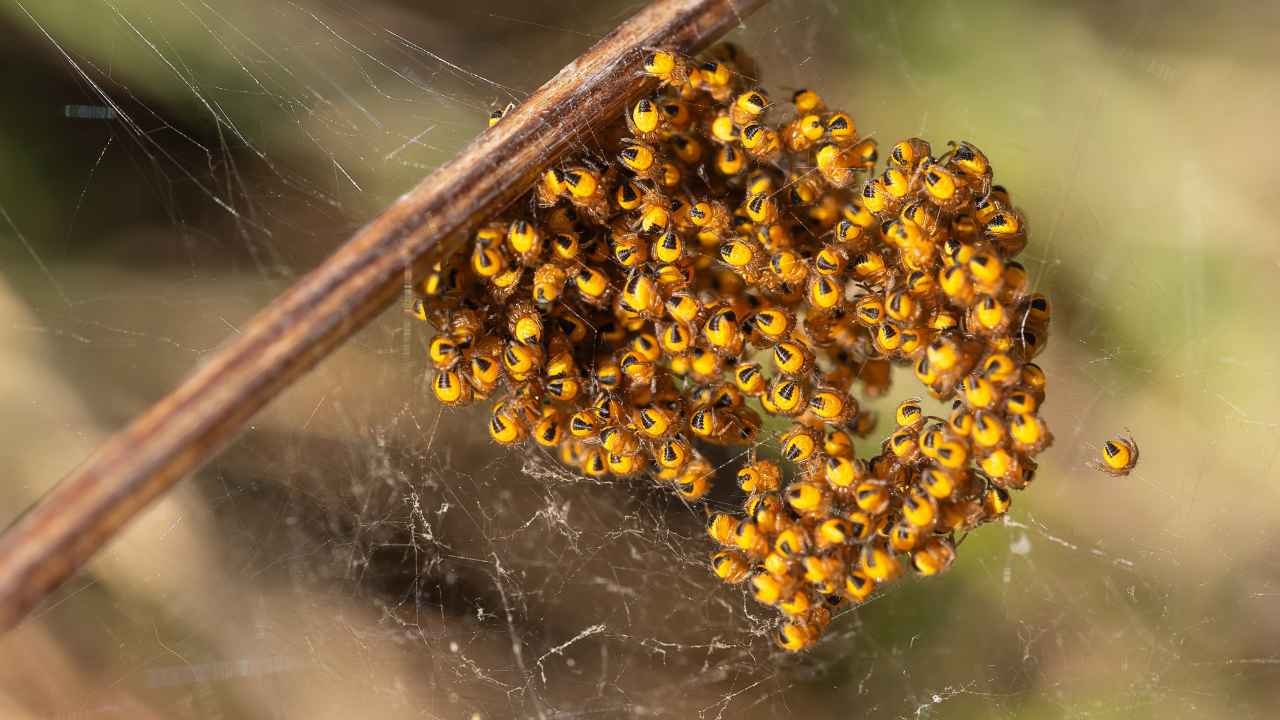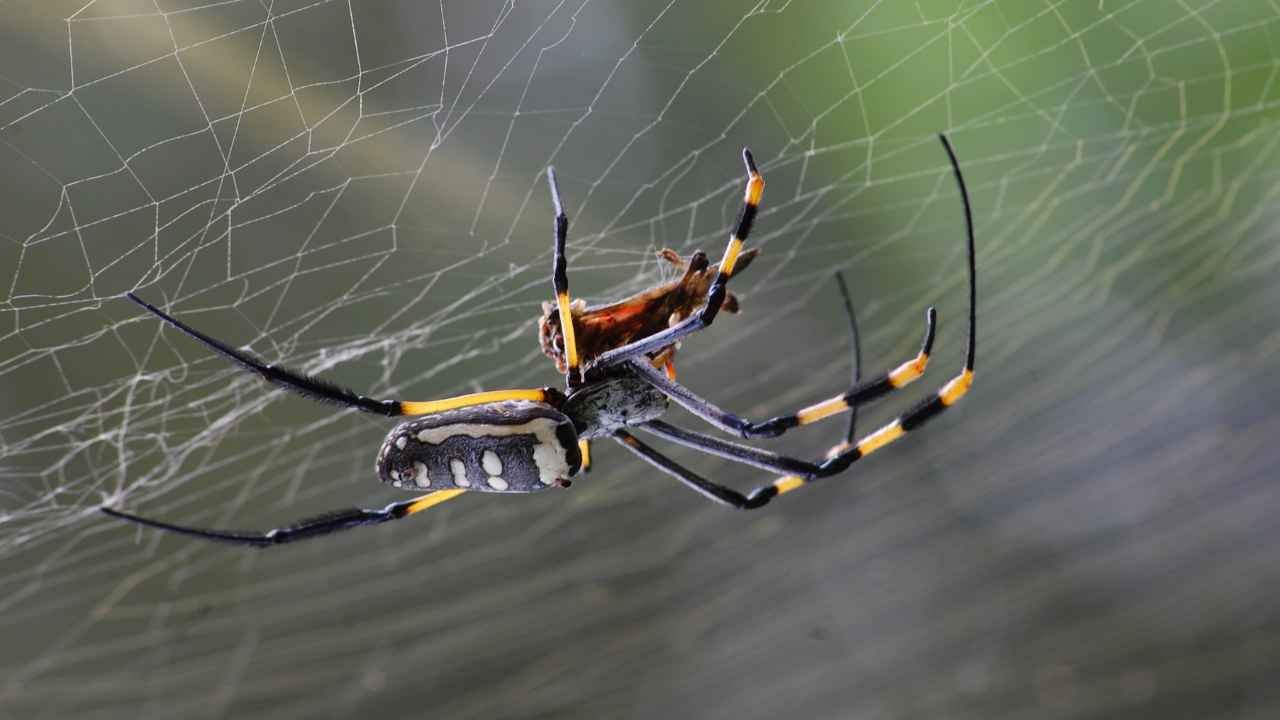Have you ever wondered how long orb spiders live? These spiders are famous for their beautiful, round webs and are often seen in gardens and forests. They are important in nature because they help control the number of insects. But there’s a lot more to these spiders than just their web-making skills. In this guide, we’re going to take a closer look at the life of an orb spider.
We’ll start from the very beginning of their life and follow them as they grow up. You might think it’s simple, but the life of an orb spider is full of challenges and interesting facts. We’ll talk about what they go through from the time they are tiny spiders until they grow up. This isn’t just about how long they live, but also about what their life is like and why they matter to us and the environment.
So, let’s dive into the world of orb spiders and learn all about their lives. This guide is going to show you some cool things about these spiders that you might not have known before!
How Long Do Orb Spiders Live
Understanding Orb Spiders

Orb spiders are fascinating creatures that are easily recognized by their round, wheel-like webs. These webs are not just for catching food; they’re also a big part of what makes orb spiders special. There are many different kinds of orb spiders, but they all share some common features. They have eight legs, like all spiders, and their bodies are divided into two parts: the head and the stomach area.
You’ll often find orb spiders in your garden or maybe while walking through the woods. They like places where they can build their webs undisturbed. What’s really cool about these spiders is how they make their webs. They produce silk from their bodies and use it to create these amazing patterns that are not only beautiful but also very effective for catching insects like flies and mosquitoes.
Orb spiders play a big role in nature. By catching and eating lots of insects, they help control insect populations. This is good for us because it means fewer pests in our gardens and less spread of diseases by insects. But orb spiders aren’t just insect hunters; they’re also food for other animals like birds. So, they are an important part of the food chain.
Despite their scary looks, orb spiders are not dangerous to humans. They might bite if they feel threatened, but their bite is usually harmless. Understanding these spiders helps us appreciate the role they play in our environment and why we should protect them.
Understanding the Orb Spider’s Lifespan

The lifespan of orb spiders is quite intriguing. Generally, these spiders don’t live for very long. Most orb spiders only live for about one year. This might seem short, but in that time, they go through a full life cycle – from a tiny egg to a grown spider.
The journey begins when the female orb spider lays her eggs. She wraps them in a silk cocoon and leaves them in a safe place. When the baby spiders hatch, they’re on their own. These baby spiders, or spiderlings, face a lot of dangers. Many don’t survive this stage due to threats like predators and harsh weather.
The spiderlings that do make it grow quickly. They shed their skin several times as they get bigger. This process is called molting. During molting, the spider is vulnerable because its new skin is soft. But once it hardens, the spider is ready to continue its journey.
As they grow, orb spiders move around, finding the best places to build their webs and catch food. They keep growing and molting until they reach adulthood. This is when they’re at their biggest and start looking for mates. After mating, the cycle starts again with the female laying eggs.
Orb spiders’ lives are a race against time. They need to grow, find food, and mate before their short lives come to an end. This quick life cycle is part of what makes studying orb spiders so interesting. They’re always on the move, and there’s always something happening in their lives.
Before delving into their lifespan, it’s crucial to understand what orb spiders are. They belong to the family Araneidae and are known for their wheel-shaped webs. These spiders are not only master builders but also play a significant role in controlling insect populations.
The Life Cycle of Orb Spiders

The life cycle of orb spiders is a fascinating journey from egg to adulthood. Understanding this cycle provides insight into how these creatures survive and thrive in their environments.
Egg Stage: It all starts when the female orb spider lays her eggs. These eggs are wrapped in a silk cocoon, often hidden away for protection. The number of eggs can vary greatly, but a single cocoon can contain hundreds of tiny spider eggs.
Spiderlings: After a period of incubation, the eggs hatch into spiderlings. These baby spiders are incredibly small and vulnerable. They soon leave the cocoon and disperse. This stage is critical and risky, as many spiderlings fall prey to predators or succumb to environmental challenges.
Growth and Molting: Spiderlings that survive begin their journey of growth. As they grow, they must molt – shedding their exoskeleton multiple times to accommodate their increasing size. Each molting stage leaves them temporarily vulnerable but is essential for their development.
Maturing into Adults: Over time, the spiderlings develop into adult orb spiders. This is when they become most visible, weaving the large, intricate webs that orb spiders are known for. Adults focus on feeding and growing strong enough for the next stage of their life.
Reproduction and the Cycle Continues: Once mature, orb spiders seek to mate. After mating, the female prepares to lay eggs, thus continuing the cycle. For many orb spiders, this reproductive phase marks the end of their life cycle, as most do not survive long after laying eggs.
This life cycle, though short, is filled with transformation and adaptation, showcasing the resilience and beauty of orb spiders.
Challenges and Survival

Life isn’t easy for orb spiders; they face numerous challenges throughout their lives. Understanding these challenges helps us appreciate how remarkable these creatures are for surviving in the wild.
Predators: One of the biggest threats to orb spiders is predators. Birds, particularly, are known to prey on these spiders. But they’re not the only ones; larger insects and other spiders can also pose a threat.
Weather Conditions: The weather plays a significant role in the life of an orb spider. Harsh conditions like heavy rain, strong winds, or extreme temperatures can destroy their webs and make survival difficult. Spiders often have to rebuild their webs frequently to continue catching food.
Competition and Parasites: Competition for food and habitat can be intense among spiders. Moreover, orb spiders sometimes fall victim to parasites, which can weaken or even kill them.
Human Impact: Sadly, human activities also affect orb spiders. Pesticides, habitat destruction, and pollution are some ways humans inadvertently harm these spiders.
Despite these challenges, orb spiders exhibit remarkable resilience. They adapt to their environment, rebuild their homes when necessary, and continue their cycle of life. This resilience is a testament to the incredible survival instincts of orb spiders.
Human Interaction and Conservation

Our relationship with orb spiders is more important than many of us realize. As part of our natural world, these spiders play a crucial role in the balance of our ecosystems, and it’s vital that we understand and protect them.
Observation and Understanding: One way we interact with orb spiders is through observation. Many people find these creatures fascinating, and by watching them, we can learn a lot about their behaviors and the role they play in nature. This understanding can lead to greater appreciation and efforts to protect their habitats.
Impact of Human Activity: Unfortunately, human activities like deforestation, pollution, and the use of pesticides can harm orb spiders. These actions can destroy their habitats and reduce the number of insects they rely on for food.
Conservation Efforts: It’s essential to engage in conservation efforts to protect orb spiders. This can include creating spider-friendly gardens, avoiding the use of harmful chemicals, and educating others about the importance of these creatures. By protecting orb spiders, we’re also helping to maintain the ecological balance and biodiversity of our environment.
Coexistence: Learning to coexist with orb spiders is a step toward a healthier planet. These spiders are not only fascinating but also beneficial to our gardens and ecosystems. By understanding and respecting them, we can ensure that they continue to thrive in their natural habitats.
In conclusion, orb spiders are more than just web weavers; they are integral parts of our environment. By understanding, appreciating, and protecting them, we contribute to the health and balance of our natural world.







Leave a Reply